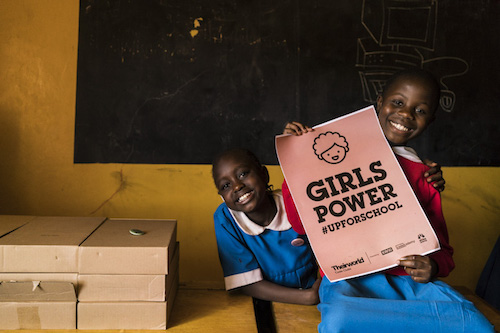
Education and Environmental Studies
Studying environmental science? Researching the impact of increasing CO2 emissions on the fragile arctic ecosystem? Composing your thesis on climate change activism? The resources on this page will make evident the inextricable link between the health and wellbeing of humans and our environment, with education the key to sustaining both.
Education is the single best tool we have to save our planet, helping people to understand the root causes and impact of climate change, and shifting their behaviour and attitudes towards more sustainable lifestyles. Education builds the knowledge, competencies and skills necessary to adapt and innovate, transforming economies and improving health and security, particularly for those most vulnerable.
Explore:
Looking for questions to centre your research efforts or interesting issues or problems to explore? These research questions can help provide a path to a focused research and writing process.
- How does education promote sustainable practices?
- Can education help to reduce carbon emissions?
- What are the long-term environmental costs associated with not investing in education?
- What is the relationship between education and environmental awareness?
- How is education linked to disaster resilience?
- Can investing in education help a country reduce costs related to the environment?
Looking for clear topic sentences to express your opinion, or thesis statements to serve as the core of your essay? Theirworld’s examples can help to form the base of your argument.
Overall
- Education changes behaviours and fosters sustainable environmental practices
- Increased education leads to higher levels of environmental concern and awareness
- Education provides a pathway to intergenerational learning and parental adoption of positive environmental attitudes
Climate change
- The more a country invests in education, the more prepared it is to address the climate crisis
- Education is a critical tool for providing important information about the climate and environment to young people
- Girls’ education is one of the most effective tools we have to fight climate changeEducation increases a country’s capacity to adapt, reducing the risk of climate-related disasters
- Investment in education reduces carbon emissions
- Education benefits vulnerable groups that are disproportionately affected by climate change the most
- Education is the best tool we have to better understand our fragile ecosystem and address climate change
Jobs
- Higher levels of education are associated with increased skills for green-based technology jobs
- Higher levels of education are associated with better farming practices
- A better-educated labour force is essential to ensuring the technological transformation required to combat climate change
Seeking key messages, facts, and opinions to build your evidence base? Find the most up-to-date, pre-sourced data points to help you make a robust case for education and the environment here.
Challenges
Climate change
- National education plans lack climate change content. A focus on climate change was found in just 45% of education sector plans and 40% of national education laws in a sample of 20 countries (GEM, 2021)
- Environmental learning proficiency has remained stagnant and low. Just 30% of all students are proficient in environmental science (GEM, 2021)
- Half of all children globally — over one billion — are at an ‘extremely high risk’ to the impacts of climate change. One-third of all children will be exposed to four or more extreme climate change hazards in the near future, including cyclones, drought, floods, heatwaves and others (UNICEF, 2021)
- In 2020, climate related disasters displaced three times more people than conflict and violence, jeopardizing education for millions of children (IDMC, 2021)
Oceans
- Citizens across the world have a limited knowledge of ocean related environmental or protection issues, attributed to the absence of ocean concepts in formal science curricula(Eddy, 2014) (Hoffman & Barstow, 2007)
- There is a tremendous opportunity to incorporate ocean literacy into STEM education. Yet national curricula globally lack any ocean literacy related content. Coastal and marine issues are nearly absent in science or geography curricula in countries like the UK, Canada, Brazil, China, and Australia, and the word ‘ocean’ is not mentioned once in New Zealand’s curriculum (Visbeck, 2018) (Gough, 2017)
Messages
Climate change
- Universal education and health interventions can have a direct impact on climate change. The resulting reductions in emissions globally could be as high as 85.4 gigatons of carbon dioxide between 2020 and 2050 (Project Drawdown, 2020)
- Girls’ education is one of the most effective tools we have to fight climate change. Using UNESCO data, projections show that educating girls could result in a massive reduction in emissions of 51.48 gigatons by 2050 (Project Drawdown, 2017)
- Financing education can reduce carbon emissions. Closing the education financing gap in low- and lower-middle-income countries could reduce emissions by 51.48 gigatons by 2050. (GEM, 2020).
- Education increases the capacity to adapt, reducing the risk of climate-related disasters, and helps to foster the knowledge, skills, and attitudes required to lessen and prevent additional environmental damage (Feinstein & Mach, 2019)
- Slowing population growth through education can reduce carbon emissions. A woman with 12 years of schooling has four to five fewer children than a woman with zero years of schooling, equivalent to a 25 metric ton reduction of carbon emissions (Kharas, 2016) (Carbon Dioxide Information Analysis Center, 2017)
- A better educated labour force is essential to ensuring the technological transformation required to combat climate change: education provides the basic, technical, and managerial skills necessary to innovate and develop green industries, transforming economies and food systems, and reducing environmental destruction; green growth could produce up to 60 million additional jobs globally (Technopolis Group, 2015) (ILO, 2012)
- Teachers think climate change education is important. In the United States, a recent study showed that 86% of teachers think climate change should be taught in classrooms (Kamenetz, 2019)
Awareness
- Providing environmental education to children has a ripple effect, with knowledge transferred to their families, inspiring action and reducing vulnerability. In the United States, intergenerational learning has proven to be an influential pathway for parental adoption of environmental concerns, ultimately changing harmful behaviour (Lawson et al., 2019)
- Increased education leads to higher levels of environmental concern and awareness. A study of nearly 30 countries found that 37% of people with secondary education and 46% of those with tertiary education were concerned for the environment, compared with 25% of those who did not start secondary education (UNICEF, 2015) (Franzen & Vogl, 2013)
- Education changes behaviours and fosters sustainable practices. In Ethiopia, a farmer with six years of education is 20% more likely to practise sustainable agricultural methods to adapt to climate change (UNICEF, 2015)
Cross-sectoral benefits
- Education saves lives. If universal upper-secondary education was realised by 2030, 200,000 disaster-related deaths could be prevented in 20 years. If progress towards achieving education for all is halted, disaster-related deaths could increase by 20% per decade (GEM, 2016)
- Education promotes sustainable farming practices. Farmers educated in field schools reduced their environmental impact by 39%, and decreased pesticide use by 17%, while increasing their yield by 13%, and revenue by 19% (Waddington et al., 2014)
- Disaster resilience increases with girls’ education. For each additional year of schooling a girl receives, her country’s resilience to climate disasters can be expected to improve by 3.2 points on the ND-GAIN Index, which measures climate change vulnerability (Brookings Institution, 2017)
- Education is essential for the transition towards green growth to address pressing environmental challenges. Green industries are growing faster than the global economy average, with a job creation potential of 15-60 million additional jobs, yet the green skills gap is already creating bottlenecks in some countries (IRENA, 2014) (GEM, 2016)
- When schools explicitly foster students to hone their critical thinking, creativity, collaboration, and entrepreneurship, student-led innovation will benefit their entire communities. At the Green School in Bali, Indonesia, where the curriculum emphasises real-world problem-solving, students show greater resilience, motivation, and social entrepreneurship – in one year, student-led energy projects led to seven new renewable energy systems at the school, reducing their environmental footprint by 40%(World Economic Forum, 2020)
Oceans
- Teachers are a force multiplier for ocean literacy. In the US, 850 teachers who were trained on ocean science and conservation have educated 500,000 students in classrooms, and more than three million others through conferences and outreach (NOAA, 2020)
- Ocean literacy is key to conservation and the protection of livelihoods. Across three countries, education on sustainable fishing practices and the establishment of protected areas for fishing and conservation has generated positive impact; fish populations have remained stable or increased in 97% of the more than 600,000 hectares protected, providing stable jobs, food, and income for generations to come (Rare, 2018)
- Providing ocean literacy in schools can have a direct and immediate impact. In the UK, a student-led education programme outlining the consequences of plastic waste in the oceans has led to more than 1,000 schools going plastic free (Surfers Against Sewage, 2019)
- Educated consumers drive the purchase of sustainable seafood, with great benefit to marine environments. Through consumer education and its commercial fisheries certification programme, the Marine Stewardship Council (MSC) has helped to grow sustainable fish populations across the world; today, over 15% of all marine wild catch is MSC certified and sold at over 38,000 sites throughout the world. (Blue Circle, 2019) (MSC, Accessed 2020)
- Ocean literacy has intergenerational impact. With the aim of creating sustainability in their fishing stocks for the next generation, fishermen in Lira, Spain, created the Mardelira Project, providing marine environmental awareness training to children in classrooms, and related visits to the field. Children write a ‘Letter to the Future’ with their learnings, read at their local town council meetings (FAO, Accessed 2020)
- Ocean literacy is vital to protecting global food stocks. Studies have estimated that all commercial and wild seafood stocks may collapse by 2048, with three billion people relying on seafood as a major source of protein. Education is a critical component to ensuring sustainable fishing practices are put into place. (Stokstad, 2006) (FAO, 2018).
- Ocean literacy provides valuable social and economic returns. Limiting global warming to 1.5 degrees Celsius, as outlined in the Paris Climate Agreement, could result in billions of dollars in extra revenue for fisheries globally, most concentrated in the developing world where many rely on fish as a source of protein (Sumaila et al., 2019)
Key opinions

Education, especially for girls, is the best investment we can make for sustainable development. Gender equality is a human right and it is also smart economics. It is therefore crucial that we continue our efforts to secure education for all in the midst of the Covid-19 pandemic
Erna Solberg, Former Prime Minister of Norway
Searching for more in-depth reporting or quick refreshers on the relationship between education and the environment? Check out Theirworld’s groundbreaking reports and explainers that examine the issue in further detail.

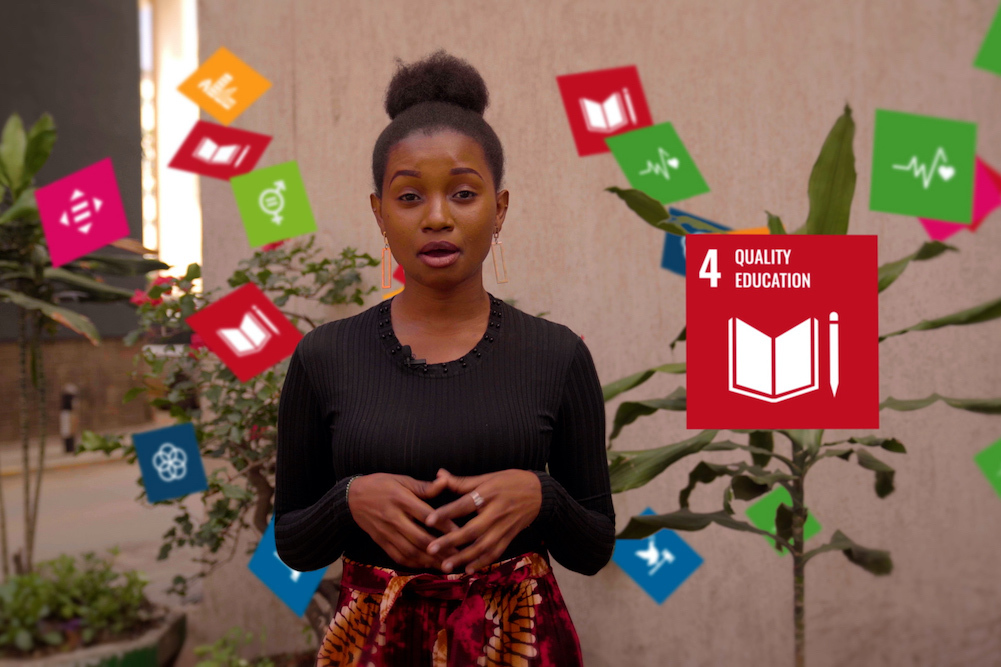
This page introduces the Sustainable Development Goals, the global commitments to end poverty, protect the planet and promote peace. It looks in detail at several of the goals and how Theirworld's work is underpinned by these goals.
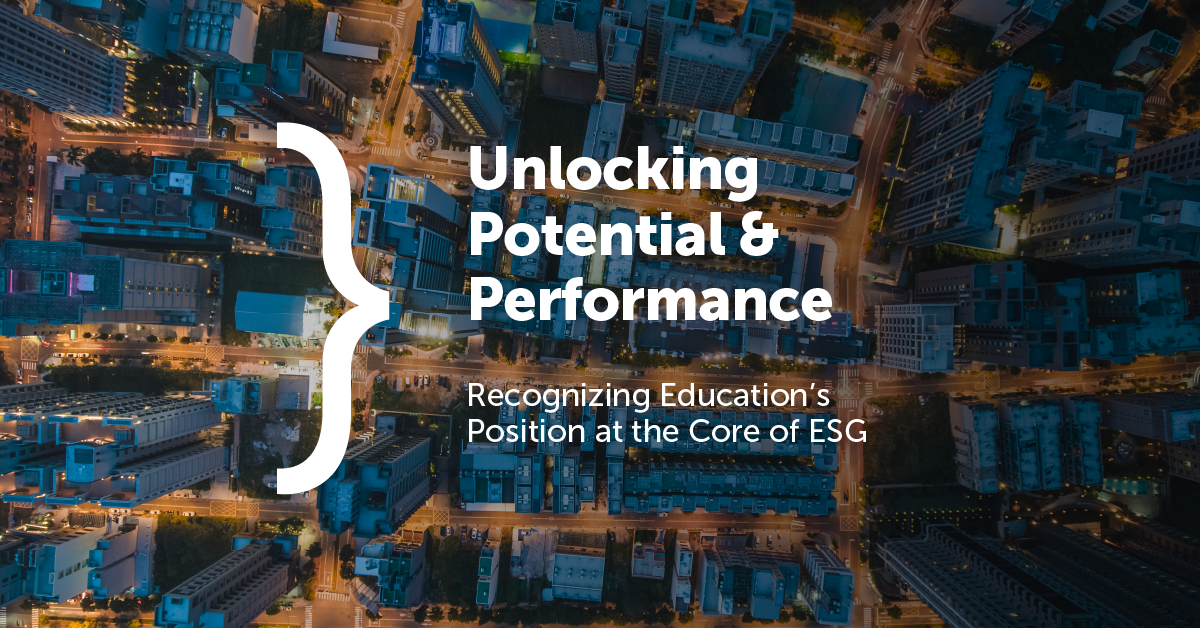
Global Business Coalition for Education
Education’s Position at the Core of ESG
In this report, GBC-Education offers a new approach to corporate educational investment – focusing on the link between education and environmental, social, and governance frameworks . We propose the development of a new blueprint designed to yield benefits for companies and investors produced at the intersection of education and ESG.
Theirworld’s commitment to education spans sectors and subjects. See what we are working on at the intersection of education and the environment:
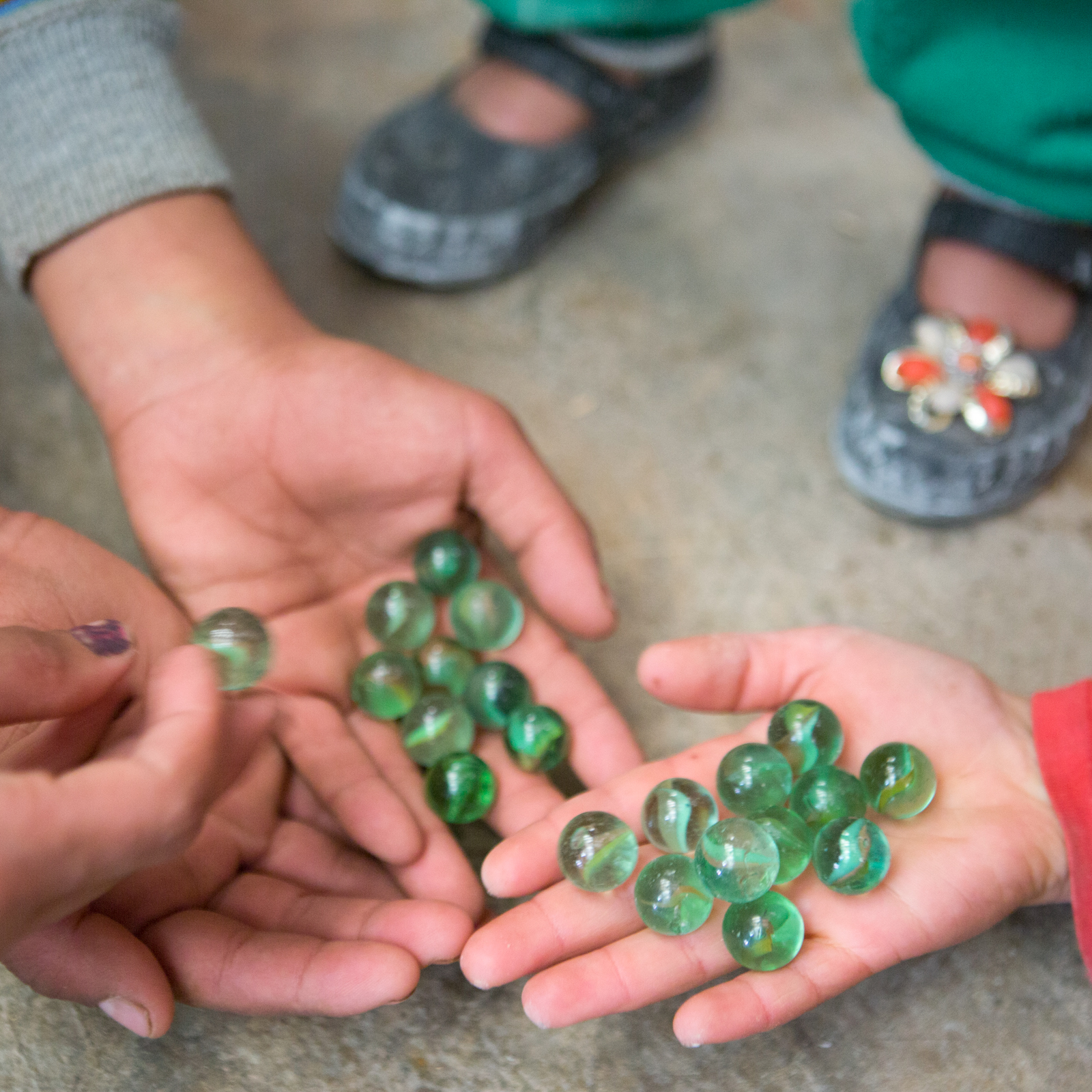
Small Grants Programme
Theirworld’s Small Grants Programme gives grants of up to £10,000 to registered charities and non-profits helping disadvantaged and overlooked young people in the UK and around the world.
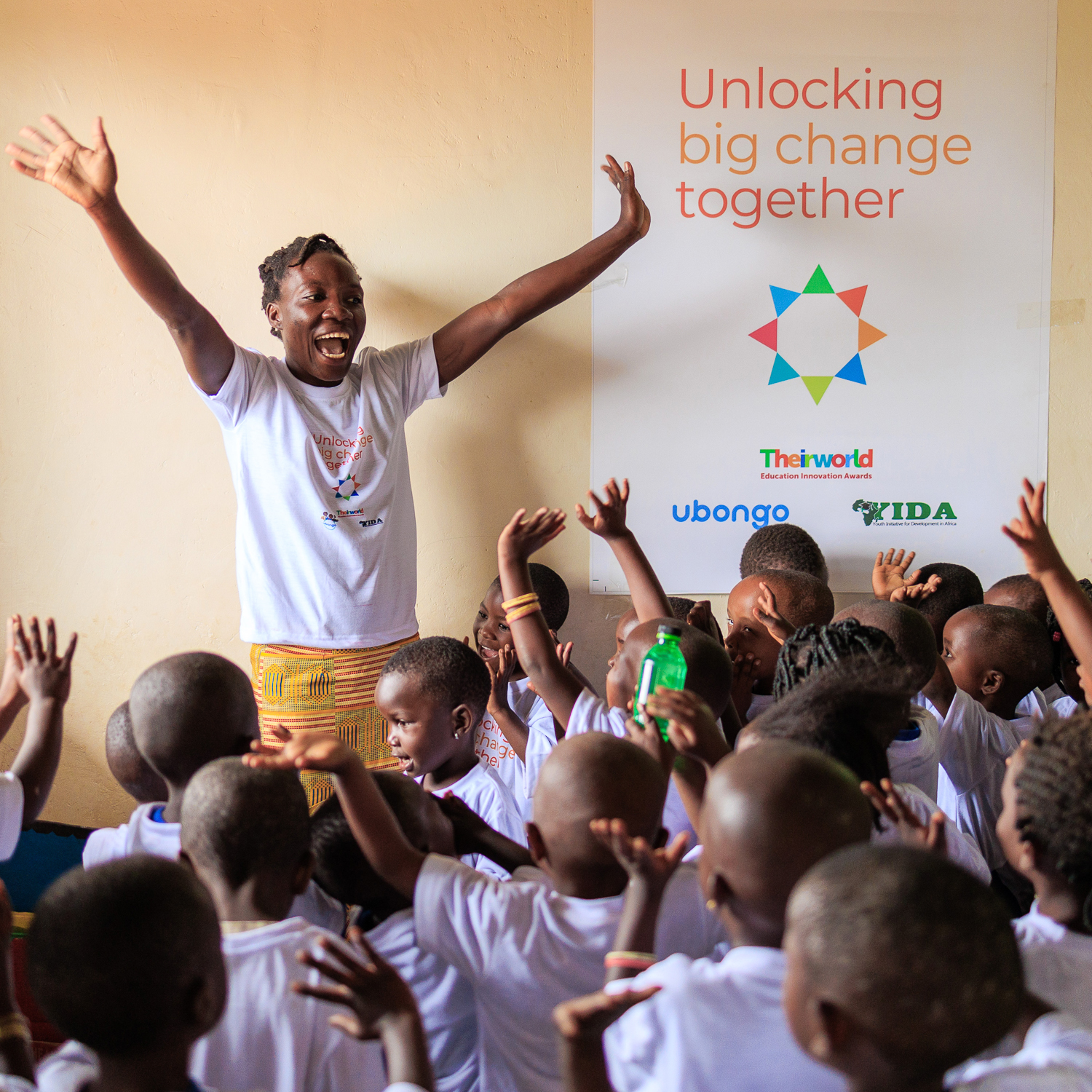
Education Innovation Awards
Theirworld’s Education Innovation Awards offers non-profits, NGOs and charities the chance to secure scale-up grants and resources to help their work grow innovative ideas in reaching overlooked youth and children.
Take Action. Get Involved.
Theirworld is committed to ending the global education crisis and unleashing the potential of the next generation. Inspired to unlock big change? Support our campaigns, fundraise with us or join our Global Youth Ambassadors programme.
To end the global education crisis we’re going to need everyone to do their part, help build the pressure needed to make change.
Support our campaigns

Our network of 2,000 young people in more than 100 countries across the globe working together to end the global education crisis.
Join the Global Youth Ambassador programme

Raising money for Theirworld is another great way to help us.
